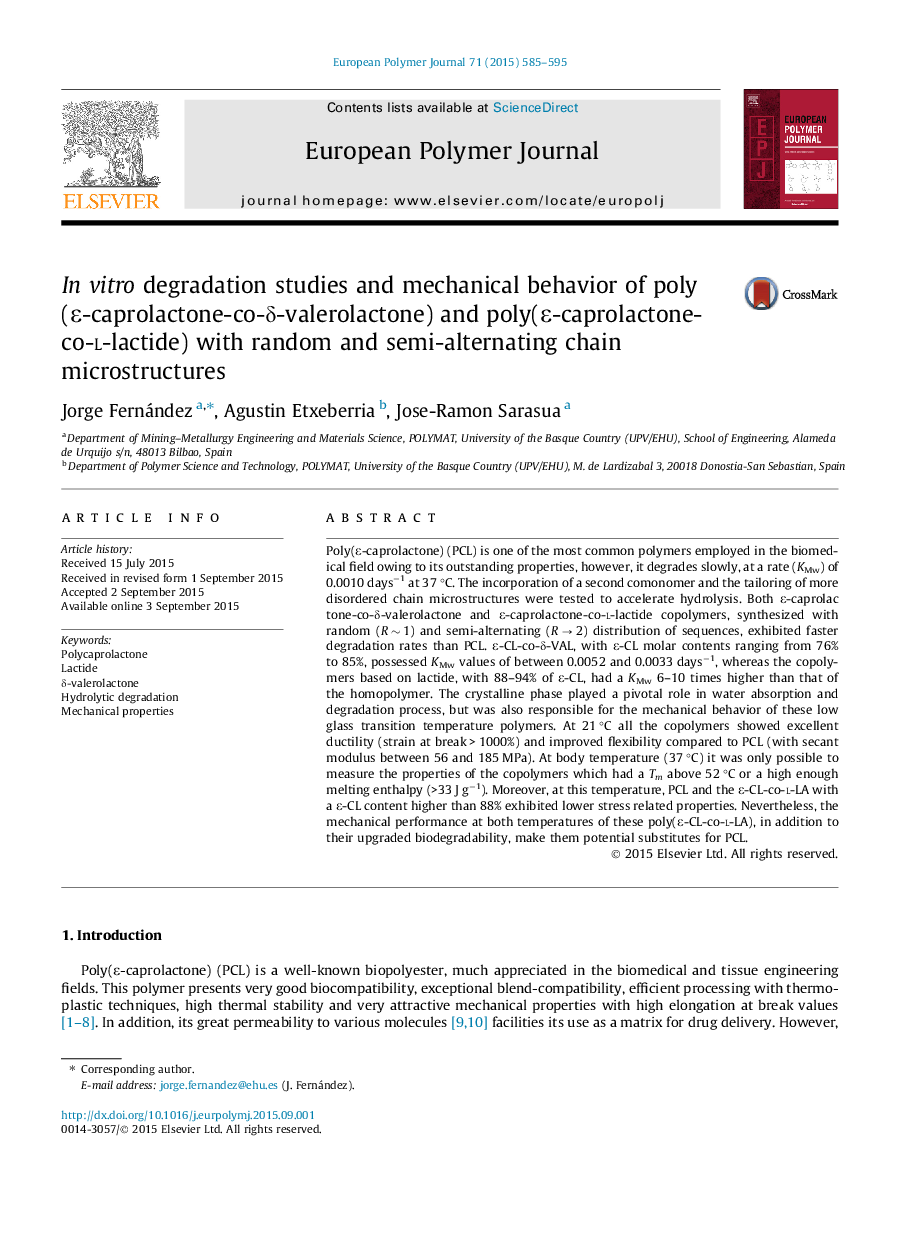| کد مقاله | کد نشریه | سال انتشار | مقاله انگلیسی | نسخه تمام متن |
|---|---|---|---|---|
| 1394888 | 1501364 | 2015 | 11 صفحه PDF | دانلود رایگان |

• ε-CL-co-LA and ε-CL-co-δ-VAL copolymers showed semi-alternating (R → 2) or random (R ∼ 1) distribution of sequences.
• δ-VAL copolymers degraded 3–5 times faster than PCL.
• l-LA copolymers had a degradation rate 6–10 times higher than that of PCL.
• Their mechanical behavior was heavily dependent on the crystalline phase.
• The properties of the copolymers with a low Tm (<52 °C) or a small ΔHm (<33 J g−1) were not measurable at 37 °C.
Poly(ε-caprolactone) (PCL) is one of the most common polymers employed in the biomedical field owing to its outstanding properties, however, it degrades slowly, at a rate (KMw) of 0.0010 days−1 at 37 °C. The incorporation of a second comonomer and the tailoring of more disordered chain microstructures were tested to accelerate hydrolysis. Both ε-caprolactone-co-δ-valerolactone and ε-caprolactone-co-L-lactide copolymers, synthesized with random (R ∼ 1) and semi-alternating (R → 2) distribution of sequences, exhibited faster degradation rates than PCL. ε-CL-co-δ-VAL, with ε-CL molar contents ranging from 76% to 85%, possessed KMw values of between 0.0052 and 0.0033 days−1, whereas the copolymers based on lactide, with 88–94% of ε-CL, had a KMw 6–10 times higher than that of the homopolymer. The crystalline phase played a pivotal role in water absorption and degradation process, but was also responsible for the mechanical behavior of these low glass transition temperature polymers. At 21 °C all the copolymers showed excellent ductility (strain at break > 1000%) and improved flexibility compared to PCL (with secant modulus between 56 and 185 MPa). At body temperature (37 °C) it was only possible to measure the properties of the copolymers which had a Tm above 52 °C or a high enough melting enthalpy (>33 J g−1). Moreover, at this temperature, PCL and the ε-CL-co-L-LA with a ε-CL content higher than 88% exhibited lower stress related properties. Nevertheless, the mechanical performance at both temperatures of these poly(ε-CL-co-L-LA), in addition to their upgraded biodegradability, make them potential substitutes for PCL.
Figure optionsDownload as PowerPoint slide
Journal: European Polymer Journal - Volume 71, October 2015, Pages 585–595